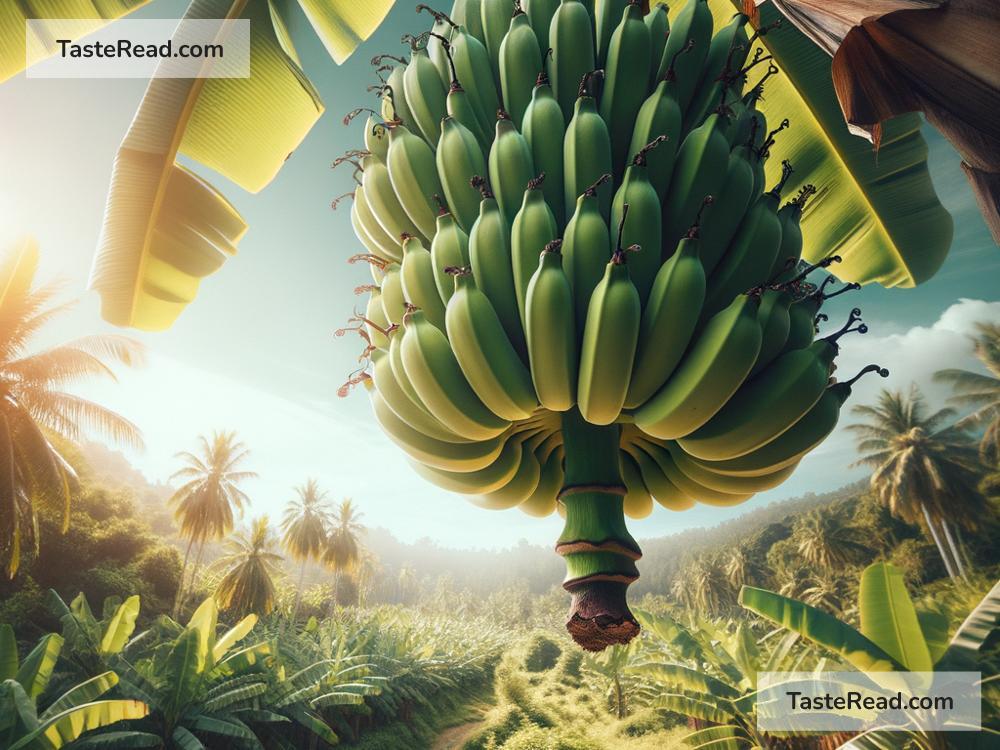The Mystery of Why Bananas Are Curved
Have you ever looked at a banana and wondered why it’s shaped like a smile? Bananas have a curved shape that makes them one of the most instantly recognizable fruits in the world. But why are they curved? The answer lies in science, nature, and the way bananas grow. Let’s dive into the fascinating mystery of the banana’s curvy shape.
A Quick Look at How Bananas Grow
To understand why bananas are curved, we first need to know how they grow. Unlike apples and oranges that grow on trees, bananas grow on large plants that some people mistake for trees. These plants are called “banana plants,” and they are actually more like oversized herbs than trees.
Bananas grow in clusters, sometimes called “hands,” and each cluster has individual fruits called “fingers.” You may have noticed that bananas don’t grow pointing straight down like other fruits. Instead, they grow upward and outward. This unique growth pattern plays a huge role in their shape.
The Role of Gravity
Here’s where it gets interesting! Bananas technically start growing downward from the plant. This is because their flowers hang down and the fruit naturally begins to form in that position. However, bananas want sunlight to ripen and grow bigger. As they develop, the fruits turn upward and start growing toward the sun, defying gravity.
This upward growth toward sunlight is a process called negative geotropism. In simple terms, geotropism is how a plant reacts to gravity. Since bananas go against gravity, their upward growth is called “negative.” Other fruits typically follow gravity and grow downward. Bananas, however, are designed to seek sunlight, which is why they curve upward.
The Science Behind Banana Curves
Bananas are curved because of the way they grow and the forces acting on them. Here’s a breakdown:
-
Banana Flowers Hang Down
Bananas begin growing as part of a hanging flower bunch. The fruit starts forming toward the ground because that’s the position of the flower. -
Sunlight Is Essential
Once the bananas start growing, they search for sunlight. Sunlight helps them ripen and carry out photosynthesis, a process that creates energy for the fruit and the plant. -
Negative Geotropism Takes Over
Instead of growing downward, bananas can sense where the sun is. They begin curving upward to get closer to light. This upward growth is what creates their unique curved shape.
Why Don’t All Fruits Curve Like Bananas?
It’s natural to ask why bananas are so unique in their growth pattern. Most fruits don’t grow curved like bananas. This is because they don’t use negative geotropism—they simply grow in the direction they originally point, whether that’s down, up, or outward.
Bananas have evolved over millions of years to grow the way they do in order to maximize their exposure to sunlight. This adaptation helps them produce the energy they need to develop and ripen into the sweet, delicious fruit we love today.
Does the Banana’s Curve Serve a Purpose?
Believe it or not, the banana’s curve is not just for looks—it actually serves a real purpose. By curving upward, bananas avoid crowding each other in the cluster. If all the bananas grew straight downward, they might overlap too much and block each other from getting sunlight. By curving away, they give each individual fruit plenty of space to develop properly.
Fun Facts About Bananas
While we’re uncovering the mystery of bananas, let’s take a detour to learn some fun facts about this fascinating fruit:
– Bananas are technically berries! They meet all the botanical requirements of a berry.
– There are over 1,000 types of bananas around the world, but the most common variety in grocery stores is the Cavendish banana.
– Bananas are one of the most popular fruits globally, eaten by millions every day.
– Bananas contain no fat and are packed with vitamins, minerals, and natural sugars to give you energy.
Wrapping Up the Mystery
Now you know that bananas are curved thanks to their strong desire to grow toward the sun. Their journey from hanging downward to curving upward makes them one of nature’s most interesting fruits. Negative geotropism helps them defy gravity and grow in a way that ensures their survival and ripeness.
The next time you peel a banana, take a moment to admire its shape. It’s a reflection of how nature works hard to create something perfect for us to enjoy. So, whether you eat bananas in your cereal, blend them into smoothies, or enjoy them as a quick snack, remember the little mystery behind the curve of this amazing fruit.


